UPSC Daily Current Affairs: 23rd September 2024 | Current Affairs & Hindu Analysis: Daily, Weekly & Monthly PDF Download
GS3/Economy
Pitfalls of Estimating GDP
Source: The Hindu
Why in news?
The estimation of Gross Domestic Product (GDP) is a crucial aspect of understanding a country's economic health. Recent discussions have focused on the proposed changes in GDP estimation methods, especially the potential use of Goods and Services Tax (GST) data, and the implications of these changes.
Introduction:
- GDP represents the total economic output of a country and is vital for comparing economic indicators and tax burdens.
- Estimating GDP at constant prices helps in understanding real growth by eliminating inflation effects.
- The current GDP series, based on the 2011-12 base year, is slated for revision, proposing 2020-21 as the new base year.
- This revision aims to utilize various datasets to accurately reflect economic changes.
Proposed Changes in GDP Estimation:
- The National Statistical Office (NSO) is contemplating the use of GST data for estimating GDP, which will replace the current Ministry of Corporate Affairs' MCA-21 database.
- This change is expected to improve the accuracy of GDP estimates, particularly for the Private Corporate Sector (PCS), which constitutes about 38% of GDP.
Previous Changes in GDP Estimation:
- The MCA-21 database was introduced in the last revision of the GDP series in 2011-12, replacing the Annual Survey of Industries (ASI) and RBI data samples.
- This change was necessary as ASI data failed to capture value addition outside factories, while RBI samples did not fully represent the growing PCS.
- The 2011-12 GDP revision unexpectedly showed a much higher growth rate for the manufacturing sector, raising skepticism due to discrepancies with other macroeconomic indicators like bank credit growth.
Systematic Overestimation of GDP:
- Studies comparing GDP estimates from the MCA-21 database and ASI data revealed significant differences.
- From 2012-13 to 2019-20, the Gross Value Added (GVA) growth rate in the National Accounts Statistics (NAS) was 6.2%, while ASI data reported only 3.2%.
- Similarly, Gross Fixed Capital Formation (GFCF) growth was 4.5% in NAS but just 0.3% in ASI, indicating a systematic overestimation in NAS based on MCA-21 data.
Concerns About Using GST Data for GDP Estimation:
- The proposed integration of GST data is seen as transformative due to its comprehensive and up-to-date nature.
- Nonetheless, concerns exist regarding the GST dataset's validation for policy research.
- The NSO is encouraged to conduct pilot studies to ensure GST data's reliability for GDP estimation.
Recommendations & Way Forward:
- To safeguard the integrity of GDP estimates, the NSO should refrain from hastily adopting unverified datasets.
- It is essential to initiate pilot studies to validate GST data across various industries and regions.
- Alternatively, the NSO might consider reverting to ASI data, which now presents a shorter time lag and could yield more reliable manufacturing GDP estimates.
Conclusion:
- Accurate GDP estimation is critical for evaluating economic performance and guiding policy decisions.
- While new datasets like GST offer potential benefits, thorough testing and validation are crucial to avoid repeating past mistakes.
- Ensuring trustworthy GDP estimates will enhance confidence among policymakers, researchers, and the public regarding economic data.
GS1/Indian Society
Professional Indian women work the most hours globally
Source: Deccan Herald
 Why in News?
Why in News?
The recent tragic death of 26-year-old Chartered Accountant Anna Sebastian Perayil in Pune has ignited discussions surrounding the professional workload in India, with her mother attributing the cause to "work stress."
What does the ILO data observe about Professional Indian women?
- Longest Working Hours Globally: Indian women in sectors such as information technology (IT), media, and professional, scientific, and technical occupations are reported to work the longest hours in the world. Women in IT and media are clocking in an average of 56.5 hours weekly, while those in professional and technical roles average 53.2 hours per week in 2023.
- Young Professional Women Work More: Younger women, particularly those aged 15-24, are working even longer hours. For example, young women in IT and media are working approximately 57 hours per week, and those in professional, scientific, and technical fields are working about 55 hours per week.
- Gender Imbalance in Workforce: Despite their long working hours, Indian women are significantly underrepresented in these sectors. Only 8.5% of the workforce in professional, scientific, and technical jobs are women, and just 20% in information and communication roles, marking one of the lowest global percentages.
- Global Comparison: In contrast, women in similar roles in countries such as Germany work significantly fewer hours, averaging 32 hours weekly, while Russia reports an average of 40 hours for the same sectors, underscoring the disproportionate workload faced by Indian women.
Major Challenges in Indian Society:
- Workload Stress: The unfortunate passing of Anna Sebastian underscores the overwhelming workload stress endured by young professionals, particularly women. The high demands and extended working hours take a toll on both mental and physical health.
- Male-Dominated Workspaces: Women in professional settings often work in male-dominated environments, leading to increased pressure, insufficient support, and challenges related to gender equity.
- Systemic Gender Inequality: Despite an increase in workforce participation, the gender imbalance in professional sectors reflects profound societal and structural disparities. Women encounter obstacles to career advancement, equal representation, and fair treatment.
- Lack of Support: The absence of sufficient organizational support during personal crises, as evidenced by Anna's situation, highlights the lack of empathy and a toxic work culture present in some professional environments.
Government Initiatives:
- Women in STEM (Science, Technology, Engineering, and Mathematics): The Indian government has implemented several initiatives designed to encourage greater participation of women in technical and scientific fields, which include scholarships, mentorship programs, and awareness campaigns such as the GATI initiative.
- Maternity Benefits: The Maternity Benefit (Amendment) Act, 2017 has increased the duration of paid maternity leave for women from 12 weeks to 26 weeks, aimed at helping them manage the dual demands of work and family life.
- Gender Equality Programs: Initiatives like Beti Bachao Beti Padhao focus on promoting girls’ education and empowerment, addressing the long-standing gender imbalance in professional settings.
- Skill Development Initiatives: Government programs such as Skill India and Digital India aim to equip women with technical and vocational training, thereby helping to close the gender gap in high-skill industries like IT and professional services.
Way forward:
- Work-Life Balance Reforms: Implement stricter labor regulations on working hours and encourage flexible work arrangements to alleviate burnout, particularly among young professionals in high-demand sectors.
- Inclusive Workplaces: Enhance gender diversity and equity initiatives within male-dominated industries by fostering supportive work environments, mentorship opportunities, and leadership roles for women.
Mains PYQ:
- What are the continued challenges for Women in India against time and space? (UPSC IAS/2019)
GS3/Science and Technology
India’s Data Centre Ambitions
Source: Indian Express
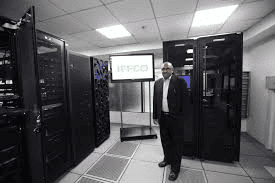
Why in News?
With the rapid growth of the sector in emerging economies, India is poised to become a significant player in the data centre market. However, the country may encounter strong competition from nations such as Malaysia and Vietnam.
- A data centre is a designated area within a building or a collection of architectural setups specifically designed to house computer systems along with related components, including networking and storage systems.
The Indian Data Centre Sector:
- Data centre segments in India: The sector is categorized into two primary segments: captive and outsourced (which includes colocation and hosting). These segments are further divided based on the type of IT infrastructure, such as servers, storage, and enterprise networking.
- Market overview: The Indian data centre market is currently experiencing dynamic growth, supported by significant government initiatives. In 2023, the market generated approximately US$7.44 billion in revenue, with the network infrastructure segment leading at US$5.09 billion. In 2022, India's data centre capacity reached 637 MW, ranking it as the 13th largest data centre market globally, with 138 operational data centres. By the end of 2025, 45 new data centres with a combined area of 13 million square feet and a capacity of 1,015 MW are expected to be established.
- Government support:To boost investment and expedite the data centre expansion, the Indian government is crafting a data centre policy. Key provisions of this policy include:
- Incorporating data centres under the Essential Services Maintenance Act (ESMA)
- Establishing Data Centre Facilitation Units (DCFU)
- Creating Data Centre Economic Zones
- Implementing a special category code for data centres as per the National Building Code of India
- Outlook: The future of India’s data centre sector looks promising, driven by the expanding digital economy, increased internet accessibility, and the transition from 4G to 5G networks. Emerging regulatory frameworks requiring data localization are anticipated to influence demand within the data centre market.
Data Centres in the Emerging Markets in Asia-Pacific:
- Research Highlights: According to S&P Global, over $100 billion is projected to be invested in data centres across the Asia-Pacific region in the next five years, with emerging markets expecting to outpace established markets in terms of capacity growth. This spending is fueled by robust data growth and the increasing prominence of AI, cloud computing, and digitalization.
- Attractiveness of Emerging Markets:Emerging markets in Asia-Pacific are appealing alternatives to developed markets due to:
- Lower costs for the development and operation of data centres
- Significant growth in data demand driven by digitalization and favorable demographics
- Local data centre development as part of initiatives for data sovereignty
Case of India:
- According to S&P Global research, India has a leased data centre capacity ranging from 1-3 GW, which is the highest among emerging markets like Indonesia, Malaysia, the Philippines, Thailand, and Vietnam. Major tech companies, including Google, Microsoft, and Amazon, have established data centres in India.
- Challenges: India may face competition from emerging markets and developed countries in attracting more data centres. For instance, Johor Bahru is becoming a preferred location for new data centres due to its lower costs compared to Singapore. Additionally, Japan is incentivizing decentralised data centre development away from major urban centers like Tokyo and Osaka.
- Opportunities: Stricter data sovereignty regulations in Southeast Asian countries could benefit India. Data centres in tier-two or tier-three cities generally incur lower land and construction costs than those in tier-one cities. The Indian government aims to provide subsidies for data centre establishment to leverage the AI boom and facilitate easier access to computing resources for smaller entities, such as startups and research institutions.
Efforts in India to Boost Computing Capacity:
- Need: Developing robust AI systems requires significant computing capacity in addition to data sets and innovative algorithms. However, the high costs of this capacity pose a challenge for smaller enterprises striving to create advanced AI solutions.
- Steps taken: The Indian government is initiating plans to procure graphics processing units (GPUs) as part of the ambitious IndiaAI Mission, aimed at providing computing resources to Indian startups, researchers, public sector agencies, and other government-approved entities.
- IndiaAI Mission:Launched at the GPAI Summit in 2023, this mission aims to:
- Establish a computing capacity exceeding 10,000 GPUs
- Support the development of foundational models trained on datasets encompassing major Indian languages for priority sectors such as healthcare, agriculture, and governance
- Of the total budget of Rs 10,372 crore, Rs 4,564 crore is allocated for building computing infrastructure.
GS2/International Relations
Quad meet launches maritime and health initiatives
Source: The Hindu
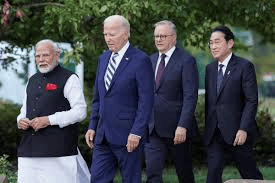
Why in News?
The recent summit of the Quad leaders resulted in several significant initiatives aimed at enhancing cooperation among the member countries—India, the United States, Australia, and Japan.
- Quad Cancer Moonshot: This initiative targets the fight against cervical cancer, with India committing $10 million to screening efforts. The Serum Institute of India and Gavi aim to provide up to 40 million vaccines for the region, pending regulatory approvals.
- Quad-at-Sea Ship Observer Mission: Set to commence in 2025, this mission is designed to improve interoperability and maritime safety among Quad nations.
- Logistics Network Pilot Project: This project will enable the sharing of airlift capacity among Quad countries to bolster disaster response efforts throughout the region.
- Maritime Initiative for Training in the Indo-Pacific (MAITRI): This initiative is focused on training Quad partners to effectively monitor and secure their waters, enforce maritime laws, and deter unlawful activities. India will host the first MAITRI workshop in 2025.
- Maritime Legal Dialogue: A new dialogue has been initiated to uphold a rules-based order in maritime operations, specifically condemning aggressive actions, particularly those related to China.
What is MAITRI?
- MAITRI, or Maritime Initiative for Training in the Indo-Pacific, aims to enhance the maritime capabilities of Quad partners.
- Capacity Building: By training personnel from partner nations, MAITRI seeks to improve their ability to monitor and secure their maritime territories effectively.
- Enhanced Cooperation: The initiative encourages closer collaboration among Quad countries in maritime security, which is essential given the rising tensions in areas like the South China Sea.
- Regional Stability: By equipping nations with improved tools and knowledge to enforce maritime laws and counter unlawful activities, MAITRI contributes to greater stability in the Indo-Pacific region.
Effectiveness of QUAD in Recent Times:
- Condemnation of Aggression: The Quad has taken a firm stance against aggressive actions in the East and South China Seas, demonstrating unity among member states on regional security issues.
- Support for Ukraine: The leaders expressed deep concern regarding the ongoing conflict in Ukraine and reiterated their commitment to international law, showcasing a united approach to global challenges beyond just regional security.
- Expanded Fellowship Programs: The Quad fellowship program has been broadened to include additional scholarships for STEM education, reflecting a commitment to educational collaboration and capacity building in science and technology.
- Focus on Health Initiatives: The launch of the Quad Cancer Moonshot highlights a proactive stance towards addressing public health challenges, specifically in combating cervical cancer through international cooperation.
Way Forward:
- Strengthen Maritime Security Collaboration: Quad nations should enhance cooperation via initiatives like MAITRI and the Quad-at-Sea mission to bolster maritime security, law enforcement, and interoperability in the Indo-Pacific, ensuring stability amid regional tensions.
- Expand Multilateral Health and Development Programs: Building on the success of initiatives like the Quad Cancer Moonshot, the Quad should further invest in collaborative healthcare, disaster response, and capacity-building projects to tackle pressing global challenges and enhance resilience across member states.
Mains PYQ: Quadrilateral Security Dialogue (Quad) is transforming itself into a trade bloc from a military alliance, in present times Discuss. (UPSC IAS/2020)
GS1/Indian Society
U.P., Rajasthan, M.P. top in cases of atrocities on Dalits: report
Source: The Hindu
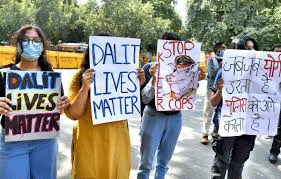
Why in News?
According to a recent government report, a striking 97.7% of reported atrocities against Scheduled Castes (SCs) in 2022 occurred in just 13 states, with Uttar Pradesh, Rajasthan, and Madhya Pradesh leading in the number of cases.
What are the findings as per the report?
- Concentration of Cases: A staggering 97.7% of atrocities against SCs were documented in 13 states, with similar trends noted for Scheduled Tribes (STs), where 98.91% of cases were reported from these states.
- Statistics on Atrocities:
- For SCs, there were 51,656 reported incidents, with Uttar Pradesh alone accounting for 23.78% (12,287 cases).
- Rajasthan and Madhya Pradesh followed with 8,651 (16.75%) and 7,732 (14.97%) cases, respectively.
- In the case of STs, a total of 9,735 cases were noted, with Madhya Pradesh reporting the highest percentage at 30.61% (2,979 cases).
- Investigation and Charge-Sheeting:
- Among SC-related cases, 60.38% resulted in charge sheets, while 14.78% concluded with final reports due to reasons such as false claims or insufficient evidence.
- For ST-related cases, the charge-sheeting rate was slightly higher at 63.32%, with similar conclusions for final reports.
- Conviction Rates: The conviction rate for atrocities under the Act has fallen to 32.4% in 2022, down from 39.2% in 2020, highlighting a troubling trend in legal outcomes for victims.
- Special Courts and Infrastructure: Out of 498 districts, only 194 had established special courts to expedite trials related to these cases, indicating a significant lack of judicial infrastructure.
What are the protections for SCs in Indian law?
- Prohibition of Atrocities: The Scheduled Castes and Scheduled Tribes (Prevention of Atrocities) Act, 1989, defines various forms of atrocities against SC members, including social exclusion, bonded labor, forced manual scavenging, and physical violence.
- Legal Recourse: Victims have the right to report crimes to the police or the National Commission for Scheduled Castes (NCSC), which can investigate complaints and ensure legal protections are upheld.
- Punishments for Offenders: Offenders found guilty of committing atrocities against SC members can face imprisonment ranging from six months to five years, in addition to fines.
What initiatives have been taken by the government to empower SCs economically and socially?
- Reservation Policies: The Indian Constitution mandates reservations for SCs in government jobs and educational institutions to enhance their representation and opportunities.
- Financial Assistance Programs: Various schemes provide financial support for self-employment and skill development among SC communities to improve their economic status. An example is the National Scheduled Castes Finance and Development Corporation (NSFDC).
- Establishment of Protection Cells: SC/ST Protection Cells have been set up across states to address grievances and ensure the enforcement of protective laws. In Karnataka, these cells have actively monitored atrocities against SCs and STs and conducted surveys in areas prone to such incidents.
- Awareness Campaigns and Training Programs: The government runs awareness campaigns to educate SC communities about their rights and available legal protections, such as the "Bharat ke Sathi" campaign.
Way forward:
- Strengthening Legal and Judicial Mechanisms: There is a need to establish more special courts and fast-track mechanisms in all districts to ensure timely justice for victims of atrocities, alongside improving conviction rates through effective investigation and prosecution.
- Empowering SC Communities Through Socio-Economic Initiatives: Expanding skill development, financial assistance programs, and awareness campaigns will enhance the economic independence and social integration of SC communities, ensuring better enforcement of their rights and protections.
Mains PYQ:
Whether the National Commission for Scheduled Castes (NCSC) can enforce the implementation of constitutional reservation for the Scheduled Castes in the religious minority institutions? Examine.
GS2/International Relations
Visit of PM Modi to the United States of America
Source: Mint

Why in News?
PM Modi is on an official visit to the United States of America. During this visit, he met with the President of the USA, Joseph Biden on the sidelines of the Quad Summit in Delaware. In a special gesture, President Biden hosted the meeting at his home in Wilmington.
During the meeting, the following documents were adopted:
- Joint Fact Sheet: The United States and India Continue to Expand Comprehensive and Global Strategic Partnership
- India to launch national security semiconductor fabrication plant: Under a transformative collaboration with the United States, India is set to launch its inaugural national security semiconductor fabrication plant. This facility is designed to produce chips for military applications and critical telecommunications. It will be supported by the India Semiconductor Mission and involves a strategic technology partnership between Bharat Semi, 3rdiTech, and the US Space Force. Named 'Shakti', the fab will focus on producing infrared, gallium nitride, and silicon carbide semiconductors. This facility will not only mark India’s first such plant but will also stand among the world's pioneering multi-material fabs dedicated to national security. This initiative represents a major advancement comparable to the civil nuclear agreement, being the first instance where the US military has partnered with India for high-value technologies.
- Establishment of the GF Kolkata Power Centre: Both leaders acknowledged efforts to build resilient and secure semiconductor supply chains, including the establishment of GlobalFoundries’ (GF) Kolkata Power Center, which will contribute to semiconductor supply chains and innovation in low-emission vehicles, AI, and connected devices.
- NASA and ISRO collaboration: The leaders welcomed the first joint NASA-ISRO research project set for 2025 aboard the International Space Station.
- Establishment of the U.S.-India Global Challenges Institute: The new institute will mobilize over $90 million across five years to support impactful R&D partnerships between U.S. and Indian universities.
- Joint Funding Initiatives in Science and Research: A combined total of $15 million in funding was announced to support U.S.-India joint research in next-generation telecommunications, semiconductors, AI, and sustainable technologies.
- Next Generation Defense Partnership: The leaders praised advancements in U.S.-India defense relations, including India's acquisition of 31 MQ-9B drones and co-production agreements for jet engines and munitions. They noted partnerships like Liquid Robotics' collaboration with Sagar Defence, the establishment of a new C-130J MRO facility, and INDUS-X innovation challenges. The leaders emphasized military interoperability, space and cyber cooperation, and upcoming initiatives including Liaison Officer deployments and joint exercises such as TIGER TRIUMPH. Efforts to enhance India's MRO ecosystem and align defense procurement systems were also highlighted. They welcomed the recent conclusion of the Security of Supply Arrangement (SOSA), which improves the mutual supply of defense goods and services.
- Catalyzing the Clean Energy Transition: Both sides celebrated U.S.-India collaboration on clean energy, launching a roadmap to expand safe energy supply chains. This includes unlocking $1 billion for renewable energy projects, U.S. International Development Finance Corporation (DFC) loans for solar manufacturing, and partnerships on hydrogen safety and critical minerals. They emphasized the Strategic Clean Energy Partnership (SCEP) for innovation, climate change, and job creation. The leaders endorsed initiatives such as the Green Transition Fund, public-private task forces, and India's progress towards IEA membership, reaffirming their commitment to accelerating clean energy deployment and manufacturing.
- Empowering Future Generations and Promoting Global Health and Development: Both sides celebrated the new U.S.-India Drug Policy Framework for the 21st Century and its accompanying Memorandum of Understanding, aimed at deepening collaboration to disrupt the illicit production and trafficking of synthetic drugs and precursor chemicals. They also welcomed the newly launched Bio5 partnership among the United States, India, ROK, Japan, and the EU to enhance cooperation on pharmaceutical supply chains.
- Global Digital Development Partnership: The leaders welcomed the formal launch of the new U.S.-India Global Digital Development Partnership, which aims to unite U.S. and Indian private sector companies, technologies, and resources to promote the responsible use of emerging digital technologies in Asia and Africa. They also welcomed strengthened trilateral cooperation with Tanzania through the Triangular Development Partnership, which focuses on addressing global development challenges and enhancing prosperity in the Indo-Pacific.
- Repatriation of 297 Indian antiquities: In July 2024, the U.S. and India signed a Cultural Property Agreement to implement the 1970 Convention on preventing the illicit import, export, and transfer of cultural property, culminating in the repatriation of 297 Indian antiquities from the U.S. to India in 2024.
- Objectives of the roadmap:
- Job Creation: Generate high-quality employment through clean energy initiatives.
- Accelerate Clean Energy Deployment: Foster rapid global adoption of clean technologies.
- Global Climate Goals: Work towards mutual climate objectives.
- Key Initiatives:
- Financial Support: Unlock $1 billion in multilateral finance via the International Bank for Reconstruction and Development (IBRD) for clean energy projects.
- Support manufacturing capacity expansion: Focus on solar, wind, batteries, and energy grid systems.
- Manufacturing Focus: Identify investment opportunities in clean energy supply chains, targeting solar wafers and cells, wind turbine components, energy storage systems, electric vehicle battery packs, and high-efficiency cooling technologies.
- Collaboration with Private Sector: Work with industry to scope pilot projects and facilitate partnerships, particularly in Africa for solar and EV deployment. Engage U.S. Development Finance Corporation (DFC) and Indian entities to finance clean energy component manufacturing.
- Trilateral Relationships: Build partnerships with African nations committed to clean energy, focusing on project success conditions and financing models.
- Policy Development: Share insights on policies to strengthen demand for locally manufactured clean technologies. Leverage existing laws like the U.S. Bipartisan Infrastructure Law and India's Production Linked Incentive Schemes to enhance investment security.
GS3/Science and Technology
Methicillin-Resistant Staphylococcus aureus (MRSA)
Source: The Hindu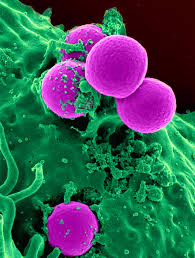
Why in News?
In 2019, MRSA was responsible for over 100,000 deaths. Despite vancomycin being a primary treatment for four decades, recent studies indicate its effectiveness may be diminishing.
About Vancomycin
- Vancomycin is an antibiotic that has played a critical role in treating MRSA infections for over 40 years.
- It is classified as a glycopeptide antibiotic, functioning by inhibiting the synthesis of bacterial cell walls.
- Vancomycin is particularly potent against gram-positive bacteria, including MRSA.
- For many years, it has been the first-line treatment for severe MRSA infections affecting the bloodstream, heart, bones, and lungs.
How Vancomycin is Losing Effectiveness Against MRSA
- MRSA typically does not develop resistance to vancomycin, but when it does, it gives rise to vancomycin-resistant Staphylococcus aureus (VRSA).
- Resistance Mechanism: The acquisition of the vanA operon by S. aureus enables it to resist vancomycin, although this often comes at a cost of slower growth, reducing its virulence.
- Fitness Compensation: Research indicates that S. aureus can evolve to overcome the fitness cost associated with resistance, allowing VRSA to grow rapidly and retain its resistance even without vancomycin.
- Mutations: Studies have found that additional mutations in VRSA strains exposed to vancomycin aid in adaptation, making the bacteria more viable in vancomycin's presence.
- Diminishing Options: As VRSA adapts, the reliability of vancomycin for treating MRSA infections diminishes, raising concerns about the long-term use of this antibiotic and highlighting the need for new treatment strategies.
PYQ:
- Can the overuse and unrestricted availability of antibiotics without a doctor's prescription contribute to the rise of drug-resistant diseases in India? Discuss the mechanisms for monitoring and control, along with various associated issues.
GS2/International Relations
India, USA signed pact to set up Semiconductor Pact for National Security
Source: Indian Express

Why in News?
India and the United States have recently entered into a significant agreement to establish a semiconductor fabrication plant. This initiative is aimed at producing essential semiconductor chips that are vital for national security, next-generation telecommunications, and green energy applications.
Key Features of the Semiconductor Fabrication Plant
- The semiconductor fabrication facility will concentrate on advanced technologies for sensing, communication, and power electronics.
- The project will be supported by the India Semiconductor Mission, highlighting a strategic collaboration among Bharat Semi, 3rdiTech, and the US Space Force.
- This plant is expected to manufacture critical semiconductor components including infrared, gallium nitride, and silicon carbide semiconductors, which are crucial for various commercial sectors.
- Titled "Shakti" (which means power), this project represents the first technology partnership of its kind between Indian companies and the US, marking a notable milestone in the Quad framework, which includes India, the US, Japan, and Australia.
- The initiative will focus on three essential areas crucial for modern warfare:
- Advanced sensing technologies
- Advanced communication systems
- High-voltage power electronics
- These areas also find significant applications in sectors such as railways, telecommunications infrastructure, and data centers.
- About India’s Semiconductor Mission (ISM)
- Details
- Launch Year: 2021
- Financial Outlay: ₹76,000 crore under the Ministry of Electronics and IT (MeitY)
- Objective:
- To develop a sustainable semiconductor and display ecosystem in India.
- To reduce dependency on imports.
- To position India as a global leader in semiconductor manufacturing.
- Core Focus
- Financial support for investments in:
- Semiconductor fabrication plants (fabs)
- Display fabs
- Semiconductor design
- Assembly, Testing, Marking, and Packaging (ATMP) facilities
- Financial support for investments in:
- Components of ISM
- Scheme for Semiconductor Fabs
- Provides fiscal support for establishing semiconductor wafer fabrication facilities.
- Aims to attract significant investments in semiconductor fabs across India.
- Scheme for Display Fabs
- Offers financial assistance to set up TFT LCD/AMOLED display fabrication facilities.
- Encourages investments in display fabrication technologies.
- Scheme for Compound Semiconductors
- Provides 30% capital expenditure assistance for establishing Compound Semiconductors, Silicon Photonics, Sensors, and ATMP/OSAT facilities.
- Design Linked Incentive (DLI) Scheme
- Offers financial incentives and infrastructure support for semiconductor design initiatives.
- Scheme for Semiconductor Fabs
- Significance of Next-Generation Telecom
- Next-generation telecommunications (including 5G and beyond) are set to transform industries by providing high-speed internet connectivity.
- These advancements will facilitate the Internet of Things (IoT), Artificial Intelligence (AI), and the development of smart infrastructure.
- Such technologies are pivotal for enhancing economic competitiveness and promoting sustainable development.
- India's commitment to adopting these technologies will foster innovation across various sectors, thereby enhancing technological self-reliance and global leadership in the semiconductor industry.
- Details
GS3/Environment
Assam records 86% drop in Rhino Poaching since 2016
Source: The Hindu

Why in news?
Kaziranga National Park and other protected habitats for the one-horned rhinoceros in Assam have observed an impressive 86% reduction in poaching since 2016. This significant decline was highlighted in a statement commemorating World Rhino Day on September 22. Between the years 2000 and 2021, poachers killed a total of 190 rhinos in Assam, marking a substantial decrease in poaching rates in recent years.
About Project Rhino:
Details
- Launch Year: 2005 (part of Indian Rhino Vision, 2020)
- Objective: To establish a wild population of at least 3,000 Greater One-Horned Rhinos distributed across seven protected areas in Assam by 2020.
- Habitat: Terai floodplains of India and Nepal; currently found in Assam, West Bengal, and Uttar Pradesh.
Partners:
- Assam Forest Department
- Bodoland Territorial Council
- World Wide Fund for Nature (WWF)
- International Rhino Foundation (IRF)
- US Fish & Wildlife Service
Key Actions:
- Translocation of rhinos from Kaziranga and Pobitora to other protected areas, such as Manas National Park, to alleviate overcrowding.
- Enhancing protection and security measures against poaching activities.
Population Growth:
- From 2008 to 2012, 18 rhinos were relocated to Manas National Park.
- By 2020, 14 calves were born in Manas following these translocations.
Conservation Status:
- IUCN Status: Vulnerable
- CITES: Appendix I
- Wildlife Protection Act, 1972: Schedule I
Significance:
- The project has facilitated the distribution of the rhino population across various protected areas, reducing their vulnerability to poaching and supporting a stable and sustainable population.
- The rhino population has surged from around 200 in the 1990s to approximately 2,900 today.
GS3/Science and Technology
Global Cybersecurity Index, 2024
Source: India Times
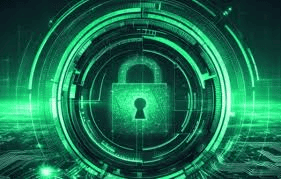
Why in News?
India has achieved Tier 1 status in the Global Cybersecurity Index (GCI) 2024, published by the International Telecommunication Union (ITU). With a score of 98.49 out of 100, India is now recognized among the top nations that exemplify role-model cybersecurity practices.
About
- Launch: 2015, by ITU
About ITU:
- Founded on 17 May 1865 as the International Telegraph Union
- Currently has 193 member states, with South Sudan being the most recent member since 2011
- India became a member in 1869
Objective
- The GCI measures the commitment of countries to cybersecurity based on five key pillars.
- It helps identify areas needing improvement and encourages the development of capabilities.
Five Pillars
- Legal: Focuses on laws and regulations related to cybercrime and cybersecurity.
- Technical: Involves implementing technical capabilities through national and sector-specific agencies.
- Organizational: Pertains to national strategies and organizations tasked with enhancing cybersecurity.
- Capacity Development: Encompasses awareness, training, education, and incentives aimed at improving cybersecurity.
- Cooperation: Involves partnerships among agencies, firms, and nations to bolster cybersecurity efforts.
Strengths and Weaknesses
- Most countries tend to excel in the legal pillar.
- The organizational pillar often highlights the weaknesses of many nations.
GCI 2024 Five-Tier Analysis
- Tier 1 (Role-modelling): Score of 95-100
- Tier 2 (Advancing): Score of 85-95
- Tier 3 (Establishing): Score of 55-85
- Tier 4 (Evolving): Score below 55
|
38 videos|5288 docs|1117 tests
|
FAQs on UPSC Daily Current Affairs: 23rd September 2024 - Current Affairs & Hindu Analysis: Daily, Weekly & Monthly
| 1. What are the common pitfalls in estimating GDP? |  |
| 2. How does the working hour of Indian women compare globally? |  |
| 3. What initiatives were launched during the Quad meet? |  |
| 4. What are the statistics regarding atrocities on Dalits in India? |  |
| 5. What significance does the Semiconductor Pact between India and the USA hold? |  |
















